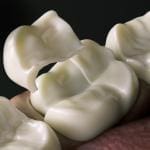When a tooth is severely damaged or weakened due to decay, fracture, or extensive dental treatment, it may require a restorative procedure to restore its functionality and strength. In such cases, a post and core restoration is a commonly used technique by dental professionals. This comprehensive guide aims to shed light on the post and core procedure, its indications, techniques, materials used, and the factors to consider for successful treatment outcomes.
What is a Post and Core Restoration?
A post and core restoration is a dental procedure used to restore a tooth that has been significantly compromised, usually following root canal treatment or extensive loss of tooth structure. It involves the placement of a post within the root canal space, which serves as an anchor for a core build-up material. The core build-up provides a foundation for the subsequent placement of a crown or other types of dental restorations.
Indications for Post and Core Restorations
The following conditions may necessitate the use of a post and core restoration:
- Extensive tooth structure loss
- Root canal-treated teeth
- Retention of a dental crown
Extensive tooth structure loss
Teeth with large cavities, fractures, or severe wear may lack sufficient natural structure to support a restoration.
Root canal-treated teeth
After root canal therapy, teeth are often weakened and require additional support to prevent fracture.
Retention of a dental crown
When a tooth is prepared for a crown, and there is inadequate remaining tooth structure to retain the restoration, a post and core can be used to improve stability.
Types of Posts
Posts can be classified into various types based on their material composition and method of retention. Commonly used post materials include:
- Metal posts
- Fiber posts
- Ceramic posts
Metal posts
Made from materials such as stainless steel, titanium, or gold alloy, metal posts provide strength and durability. They can be either prefabricated or custom-made.
Fiber posts
These posts are composed of fiber-reinforced composite materials, such as glass or quartz fibers. Fiber posts offer excellent esthetics, flexibility, and good resistance to fracture.
Ceramic posts
These posts are made of materials like zirconia or alumina. Ceramic posts are known for their excellent biocompatibility, natural appearance, and resistance to corrosion.
Post and Core Procedure
The post and core restoration procedure generally involves the following steps:
- Evaluation and treatment planning
- Post placement
- Core build-up
- Crown placement
Evaluation and treatment planning
The dentist performs a comprehensive examination, including radiographic assessment, to determine the need for a post and core restoration. Factors such as remaining tooth structure, root canal anatomy, and occlusal forces are considered during the planning phase.
Post placement
After accessing the root canal, the dentist selects an appropriate post size and shape and prepares the canal space accordingly. The post is then cemented or bonded into place, extending into the root canal and providing stability and retention.
Core build-up
Once the post is secured, a core build-up material is placed around the post to create a solid foundation for the final restoration. Core materials can be either direct, such as composite resin, or indirect, such as laboratory-fabricated materials like metal or ceramic.
Crown placement
After the core build-up has adequately cured and solidified, a dental crown is fabricated and placed over the prepared tooth to restore its shape, function, and aesthetics.
Factors Affecting Post and Core Success
Several factors influence the long-term success of post and core restorations:
- Root canal treatment quality
- Retention and stability
- Tooth structure
- Occlusal forces
- Biocompatibility
- Restoration material
- Proper isolation and cementation
Root canal treatment quality
A well-executed root canal treatment is essential for a successful post and core restoration. Proper cleaning, shaping, and disinfection of the root canal system ensure optimal healing and reduce the risk of reinfection.
Retention and stability
The choice of an appropriate post type and proper placement techniques are crucial for achieving adequate retention and stability. The post should fit snugly within the root canal space, providing resistance against forces applied during mastication.
Tooth structure
Sufficient remaining tooth structure is essential for the success of a post and core restoration. If there is extensive loss of tooth structure, additional techniques such as crown lengthening or orthodontic extrusion may be required to expose more tooth structure for proper post placement.
Occlusal forces
Consideration of occlusal forces is crucial to ensure the longevity of the post and core restoration. The restoration should be designed to distribute forces evenly and prevent excessive stress on the post and remaining tooth structure.
Biocompatibility
The selected post material should be biocompatible, causing minimal or no adverse reactions in the surrounding tissues. Metal, fiber, and ceramic posts all have varying degrees of biocompatibility, and the choice should be based on individual patient factors and preferences.
Restoration material
The material chosen for the core build-up and final restoration plays a significant role in the success of the post and core restoration. The material should possess adequate strength, durability, and resistance to wear. Additionally, it should bond well with both the post and the crown material.
Proper isolation and cementation
Achieving a dry and isolated field during the post and core procedure is essential for successful cementation. Proper isolation techniques, such as rubber dam placement, minimize moisture contamination and enhance the bond between the post, core, and tooth structure.
Advancements in Post and Core Restorations
Over the years, advancements in dental materials and techniques have improved the outcomes of post and core restorations. Some notable advancements include:
- CAD/CAM technology
- Fiber-reinforced composite posts
- Adhesive techniques
CAD/CAM technology
Computer-aided design/computer-aided manufacturing (CAD/CAM) technology allows for the precise fabrication of post and core restorations using digital scanning and milling techniques. This enables more accurate fit, improved aesthetics, and reduced chairside time.
Fiber-reinforced composite posts
Fiber posts have gained popularity due to their excellent esthetics, flexibility, and resistance to fracture. They provide a more conservative approach by allowing light transmission, mimicking the natural tooth structure.
Adhesive techniques
The use of adhesive systems has revolutionized the bonding of posts and cores to the tooth structure. These techniques enhance retention, minimize microleakage, and improve the overall strength of the restoration.
Potential Complications and Limitations
Although post and core restorations have a high success rate, complications can occur. Some potential complications and limitations include:
- Post fracture
- Root fracture
- Cementation failure
- Aesthetics
Post fracture
Depending on the material and design, posts may fracture under excessive occlusal forces or inadequate adaptation to the root canal space. Careful post selection and proper adaptation techniques can minimize this risk.
Root fracture
In some cases, the placement of a post may contribute to root fracture, particularly if there is pre-existing root damage or inadequate remaining tooth structure. Proper case selection and evaluation are crucial to avoid this complication.
Cementation failure
Inadequate cementation of the post or core can lead to premature failure of the restoration. It is important to follow proper cementation protocols and ensure optimal bond strength between the post, core, and tooth structure.
Aesthetics
Depending on the type of post used, esthetics can be a limitation. Metal posts may cause gray discoloration of the surrounding tissues, while ceramic and fiber posts provide more natural-looking results.
Conclusion
Post and core restorations play a significant role in restoring severely compromised teeth, ensuring their functionality and longevity. Understanding the indications, materials, techniques, and factors affecting success is crucial for dental professionals. With advancements in materials and techniques, post and core restorations have become more predictable and aesthetically pleasing.
Successful post and core restorations require a comprehensive treatment approach, including proper case selection, meticulous technique execution, and consideration of individual patient factors. Dentists should carefully evaluate the remaining tooth structure, root canal anatomy, occlusal forces, and esthetic considerations before proceeding with the procedure.
Advancements in materials, such as fiber-reinforced composites and CAD/CAM technology, have enhanced the outcomes of post and core restorations. These advancements offer improved esthetics, durability, and precision in fabrication and placement.
However, it is essential to acknowledge the potential complications and limitations associated with post and core restorations. These include post or root fracture, cementation failure, and aesthetic limitations. Dentists should carefully consider these factors and communicate them with their patients to manage expectations effectively.
In conclusion, post and core restorations provide a reliable and effective means of restoring severely compromised teeth. With proper case selection, meticulous technique execution, and consideration of advancements in materials and techniques, dental professionals can achieve successful outcomes and long-term restoration stability. Continuous research and development in this field will further refine the techniques and materials, leading to even better results in the future.





